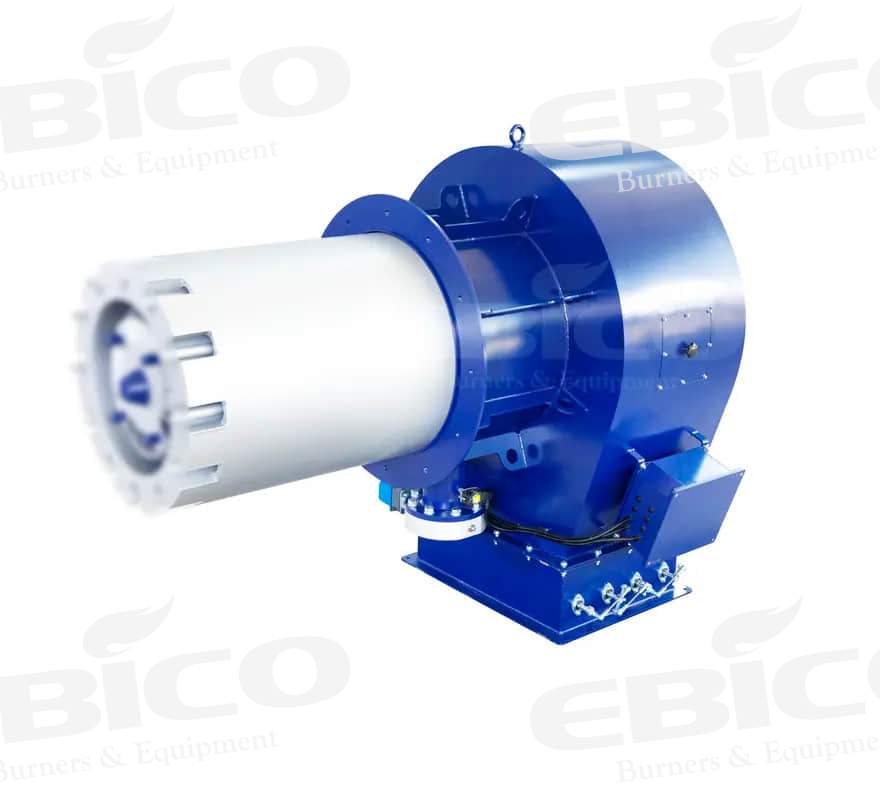Classification Of Common Flame Shapes Of Burners
Classification of common flame shapes of burners
1. Active flame
The flame shape, length, and blackening time are all suitable, which is most favorable for clinker calcination quality and pulverized coal combustion efficiency. It meets the temperature requirements of the firing zone, has low heat consumption, and the whole flame is lively and powerful. This is a flame shape that the operator wants to obtain, and it is also a flame shape of normal forging.

2. Long black flame
The black head of this kind of flame is longer, the combustion efficiency is reduced, and the front temperature rise is not high. The reasons are as follows:
① Poor coal quality, low calorific value, large ash content, coarse coal particle, high humidity, etc;
② The failure of the burner makes the air mixing effect of pulverized coal poor and the combustion speed slow;
③ Improper burner is adopted, with large external air and small internal air, improper air coal ratio, and insufficient air volume.
In case of such flame formation, the reason shall be analyzed in time to check whether the coal quality and fineness are appropriate, whether the spiral blades of the three air channel burner are damaged, and whether the air volume is sufficient. In addition, the improper operation is also prone to such flame. For example, the grate bed speed is too fast, the secondary air temperature is low due to thin materials, and there is a coal circle at the kiln mouth, which will cause the black flame head to be too long.
3. Slow flame (long flame)
The fire is not concentrated in the burning zone of the flame. The main reason is that the internal wind is too small, and the rotation is poor and cannot be diffused; The external wind is too strong, the diffusion inhibition force is too strong, and the flame is elongated.
However, when the front temperature is too high or the furnace bricks are burnt during the operation, this flame can be adopted to effectively alleviate the problem in time; In addition, this flame form can also be used before ignition, feeding, or hanging the kiln, and it can be changed when it is normal.
4. Diffuse flame
The shape of the flame is short and thick, belonging to the abnormal flame shape. The main reasons for its generation are:
① The fired belt kiln skin has a ring and a large material ball, which promotes the flame to advance, often causing high front temperature, turbidity in the kiln, uneven incoming materials, and large current fluctuation of the main machine, and increased negative pressure at the kiln tail. If not handled in time, the kiln lining will be burnt out or the clinker quality will be unqualified, and the output will be reduced.
② The multi-channel coal injection pipe is not used properly, the internal air is too large, the external air is too small, and the secondary air temperature is too high, which makes the kiln lining easy to burn.
③ The swirl angle at the end of the internal air duct is too large, the external air cannot be controlled, and the diffusion is serious.
④ The closing flame hood of the multi-channel coal injection pipe is burnt out, and the closing smoke hood burns, causing the flame to spread.
When this flame shape is found, it is necessary to timely check whether there is a ring in the kiln, whether the proportion of secondary air, whether the temperature of secondary air is too high, whether the negative pressure at the kiln tail is too small, and whether the inclination angle of spiral blades is appropriate.
5. The fire touching the kiln skin
This flame shifts upward, which is very easy to wash the kiln skin, shortens the service life of refractory bricks, increases the furnace temperature, and the flame shape is very abnormal, which is not conducive to heat transfer and clinker quality. The reasons are as follows:
① The position of the burner on the section of the kiln body is not correct, which is above the center line, and it is easy to produce a red kiln at 6m of the kiln body.
② The shock wave caused by the excessive external nozzle and excessive secondary air will make the flame float. The main reasons are the improper operation of the cooler or serious air leakage of the kiln head cover.
When a flame of this shape is found, it is necessary to timely check whether the burner position on the cross-section of the kiln barrel is correct, whether the cold air volume of the kiln head is too large, and whether the secondary air volume is too large, and timely deal with the causes.
